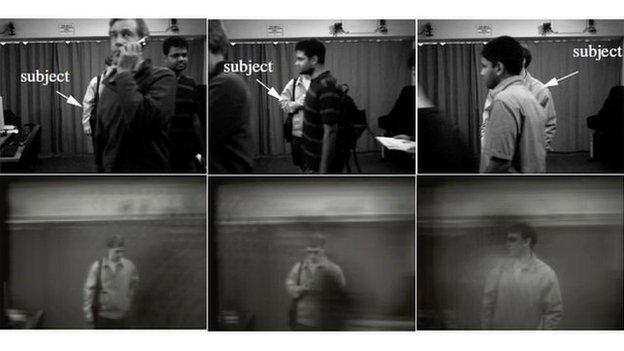Huawei P9 uses Leica dual-lens camera tech to refocus
- Published
Watch: Huawei's new phone incorporates some of Leica's camera technologies
Huawei has unveiled an Android smartphone that uses dual-camera technology to let owners refocus photos after they have been taken.
The feature is the result of a collaboration between the Chinese tech firm and German camera-maker Leica.
It means the P9 can create shallow depth-of-field shots more commonly associated with larger lenses.
Analysts say the innovation could help Huawei promote itself as a premium brand and expand its market share.
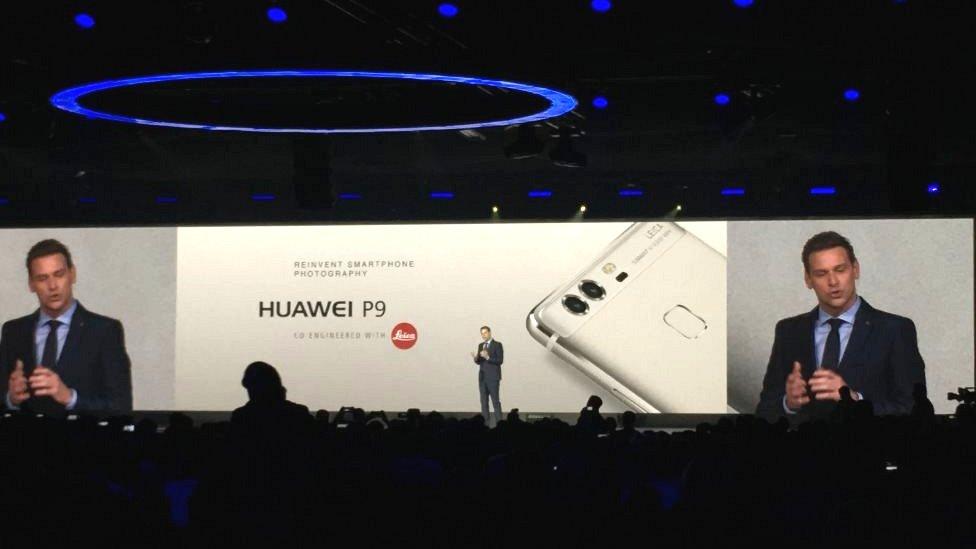
Huawei held the global launch of the P9 in London
The Shenzhen-based company shipped more than 106 million handsets in 2015, representing 44.3% growth on the previous year, according to the research firm IDC, external.
That was the fastest rise in sales of any of the major brands and put Huawei in third place in terms of market share.
However, Apple still sold more than double the number of phones and Samsung more than three times the figure.
"The camera is one of the things that defines a premium smartphone, and there's still plenty of room to improve the quality of the photography," commented Ian Fogg from the IHS Technology consultancy.
"And there are things you can do when you put two camera sensors on the back that you can't do with a single sensor."

Users can create wide aperture effects after taking a photo
Shallow focus effect
Rather than offering users the ability to take two different types of photos- as is the case with LG's dual-camera G5 handset - the P9 combines the data from both its rear sensors to create its 12 megapixel shots.
One captures red, green and blue (RGB) information about the view, while the other is limited to collecting monochrome image data.
By making use of both types, the firm says, the phone can deliver better contrast and offer superior performance in low-light conditions.
But the standout feature is the ability to simulate wide-aperture photography - the effect of allowing more light into a lens in order to create a shallow depth-of-field.
A shallow depth-of-field can create striking photographs of a subject with a blurry background.
Photography enthusiasts often spend considerable sums on digital single-lens reflex cameras (DSLRs) and large lenses to create the look.
Unlike these larger cameras, the P9 also allows users to alter the part of the image they want to be in sharp focus after they have pressed the shutter button.
This is made possible by the fact that the phone's two lenses capture slightly different views, and built-in software can analyse the differences to deduce depth information. Alternatively, the files can be exported in the RAW file format for editing on a PC.
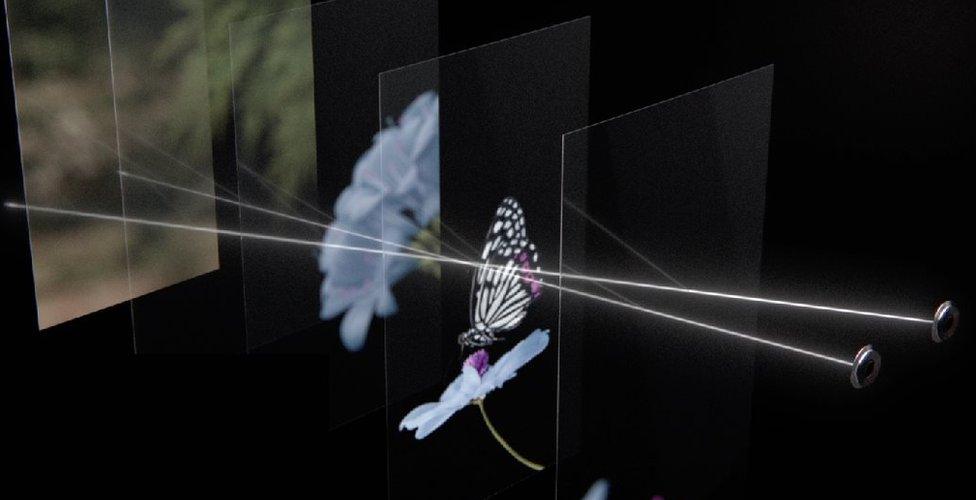
The two cameras capture slightly different images allowing depth calculations to be made
The facility is only available in stills mode, however, and cannot be used to refocus captured videos.
Lytro previously tried to sell specialist cameras that offered a similar refocusing ability, however it recently gave up on the consumer market, external after acknowledging that the rise of smartphone photography had restricted its appeal.
Nokia and HTC have also offered refocusing functions on some of their handsets, although they achieved the effect in a different manner.
Strong brand
One industry-watcher said that the tie-up with Leica should encourage potential buyers not to dismiss Huawei's dual-camera facility as being a gimmick.
"Leica is one of the strongest brands in photography, so having an association with them should make users believe that the quality of the pictures should be good," said Francisco Jeronimo, research director for European mobile devices at IDC.
"Of course, the quality of the image won't be the same as is possible from one of Leica's own cameras, but it does tell people that a company that really understands photography has been involved in engineering the device."
However, Mr Fogg added that Huawei would need to get its marketing right to make the most of the partnership.
"Leica isn't massively well known outside of serious camera enthusiasts," he explained.
"So, Huawei's challenge is how to communicate the benefit of the Leica brand to the general public as it is pushing the P9 as a mass-market flagship and not a niche device aimed at just the camera-centric few."
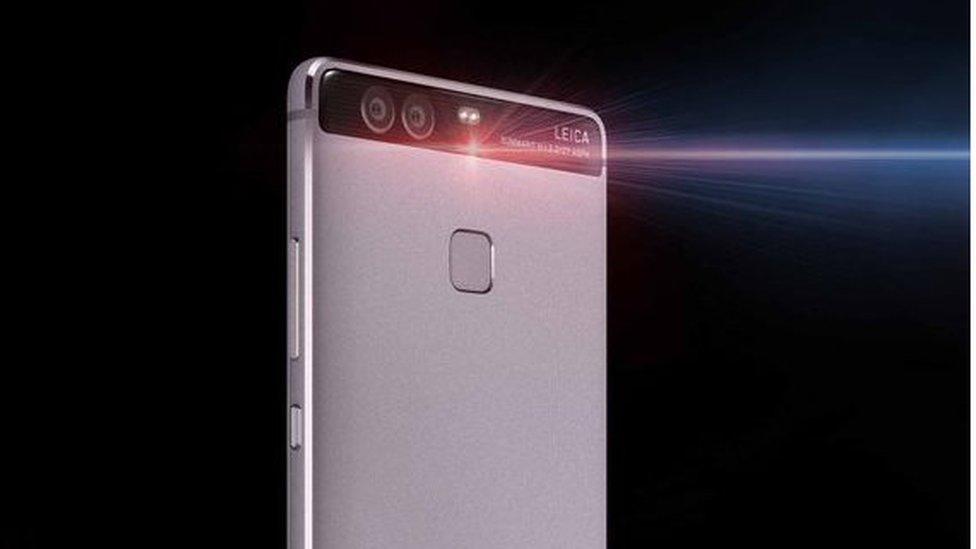
The P9 also includes a laser-focusing system to ensure short-range shots are sharp
Higher prices
Other features of the P9 include:
A 5.2in (13.2cm) display that provides 1080p high definition resolution, which is less than some rivals including Samsung's Galaxy S7 phones
A microSD slot to provide extra storage, which may be useful as the dual-camera photos take up more space
A fingerprint sensor on the rear of the device
Huawei's new ARM-based Kirin 955 computer processor
It will cost between 599 euros ($682; £485) and 649 euros when it goes on sale on 16 April, depending on how much RAM and built-in storage is desired.
The firm is also offering a larger P9 Plus model, which has a 5.5in screen and a bigger battery. It will cost 749 euros.
These mark a jump in cost over last year's P8 family, which ranged from 499 to 649 euros.
- Published6 April 2016

- Published1 April 2016

- Published4 September 2014
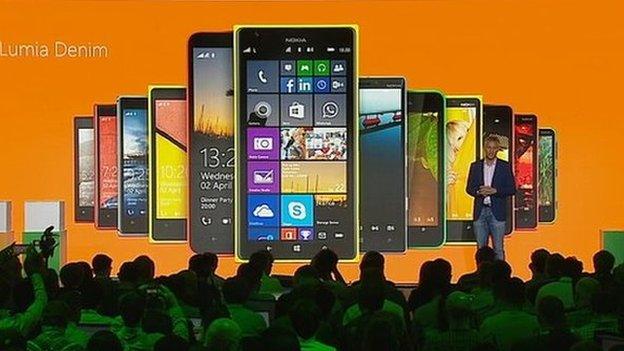
- Published11 July 2013
